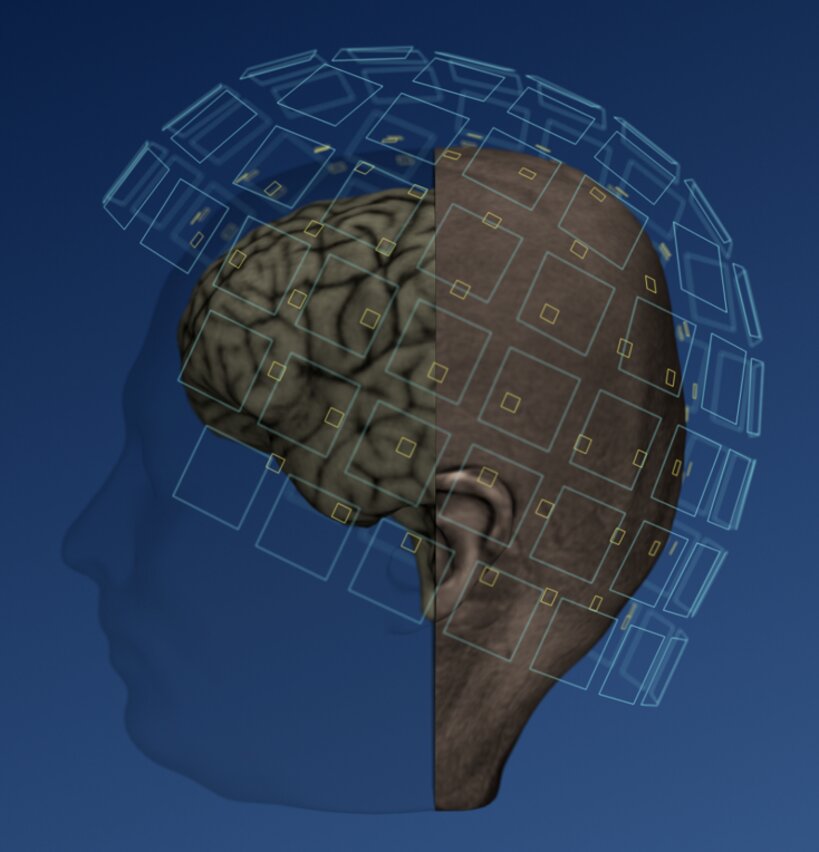
Aalto University researchers are designing a brain-imaging device that uses a new type of sensor placed on the surface of a person’s head. The new sensors employ quantum optics, allowing them to reduce the distance between the brain surface and the sensors to half of what current magnetoencephalography (MEG) scanners use.
Current MEG scanners use superconducting sensors which need to operate at just few degrees above absolute zero. Therefore the sensors require liquid helium, which makes MEG scanners large and expensive. To protect the patient’s head from the extreme cold, the sensors need to be thermally insulated keeping them at least 2 cm away from the head.
Using an on‐scalp array comprised of eight optically pumped magnetometers (OPMs) and a conventional whole‐head array, the researchers measured responses to a dynamic visual stimulus known to elicit strong gamma‐band responses. (Aalto University)
